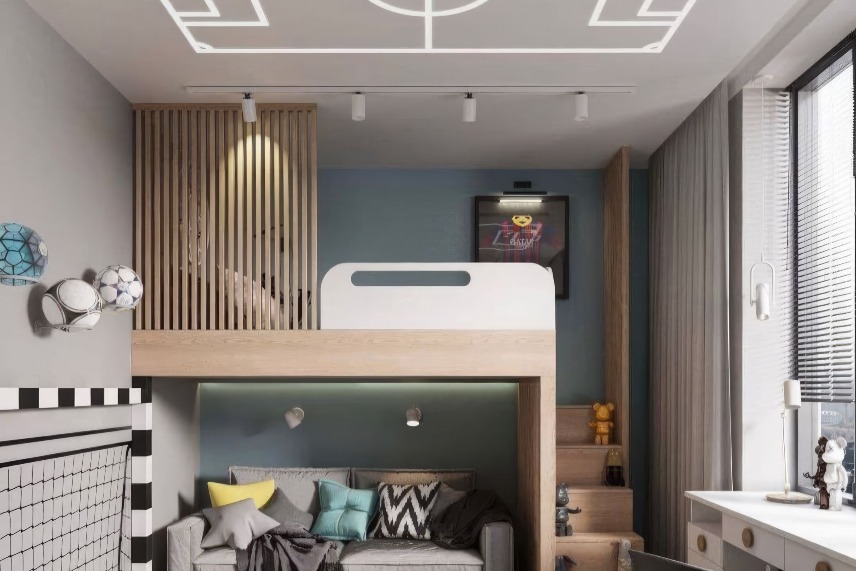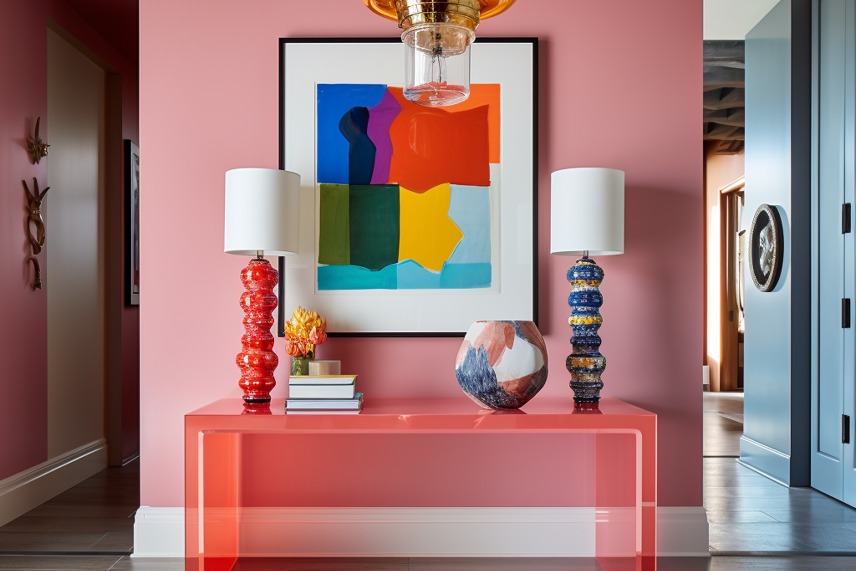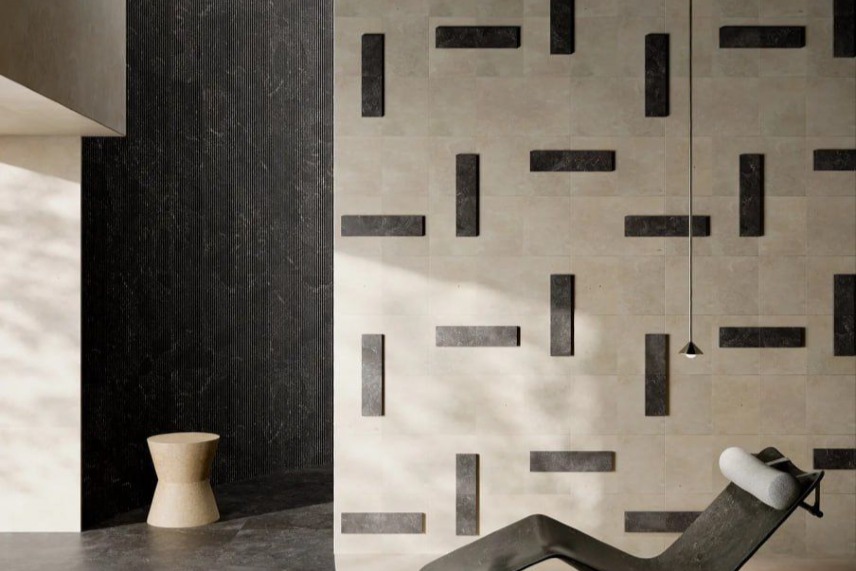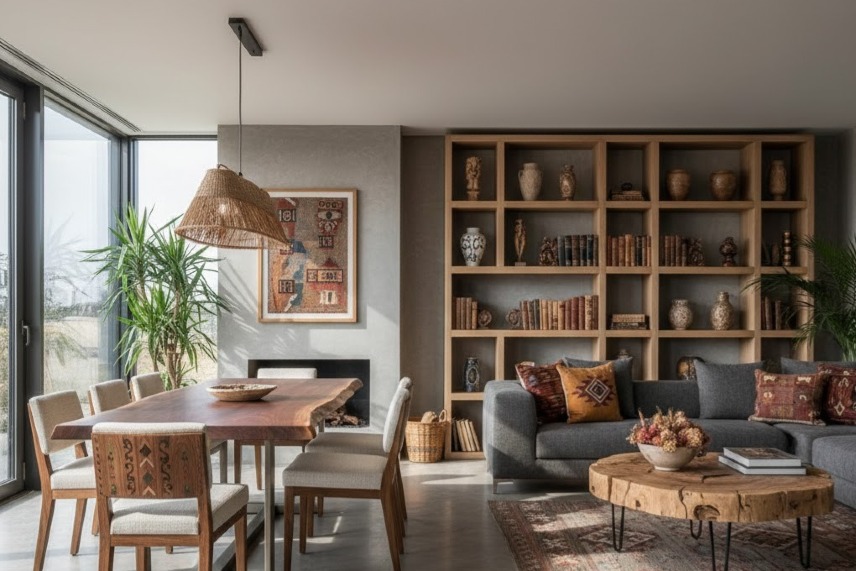- HOME PAGE
- / BLOG
BLOG
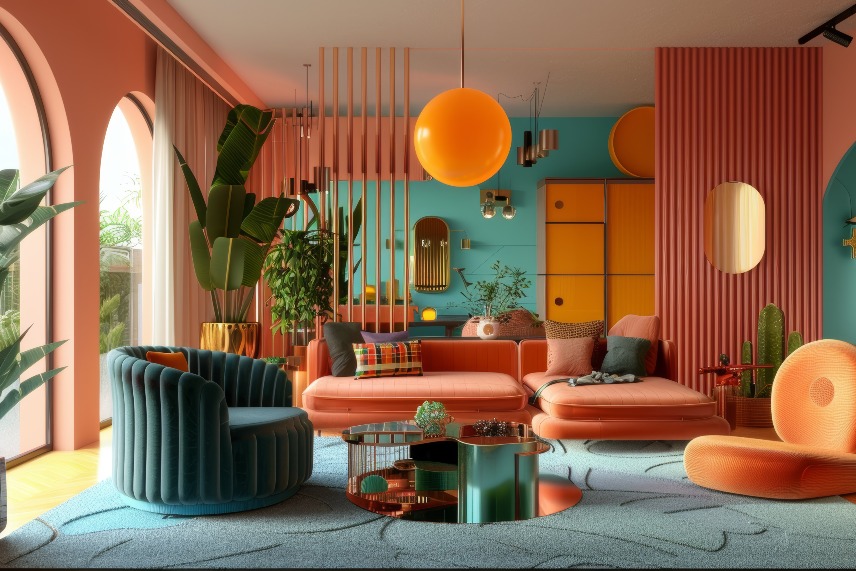
From Minimalism to Maximalism: Interior Design Trends
From Minimalism to Maximalism: Interior Design Trends
Interior design has always reflected the social mood and lifestyle of its era. Once defined by clean lines and the “less-is-more” philosophy, minimalism is now giving way to a bolder, more personal, and more emotional language — maximalism.
Yet this shift is not merely aesthetic; it is a response to the pace of modern life, the rise of individuality, and the growing emotional role of the home.
The Language of a New Era: Emotional Spaces
The minimalist era symbolized order, clarity, and calm. In the post-pandemic world, however, the home has evolved from a simple living space into a stage for creation, rest, and self-expression.
People no longer want their interiors to be just beautiful — they want them to feel like them. That’s why maximalism represents not only visual richness but also emotional depth.
In maximalism, the goal is not “more”; it’s personalization.
Colors, textures, memories, and collections come together to tell the story of their owner — spaces become autobiographical rather than anonymous.
Color Psychology: The Return of Boldness
The neutral tones of minimalism — white, beige, gray — are giving way to bold palettes. Emerald green, cobalt blue, burgundy, mustard, and deep purples are taking their place on walls, furniture, and accessories.
This evolution reflects a collective desire for fulfillment rather than safety. Color is no longer a background element; it’s a tool of emotional expression, shaping the atmosphere of a room.
In a maximalist interior, colors do not clash — they converse. Contrasts coexist in harmony, just like in life itself.
Texture, Layers, and Storytelling
Minimalist interiors were smooth and silent. Maximalism brings texture to the forefront. Velvet, linen, natural stone, brass, lacquered surfaces, and hand-woven rugs redefine the tactile identity of interiors.
Now it’s not color but the relationship between materials that gives a space its character. Every surface tells a story — of time, warmth, and memory.
This layered approach creates emotional depth. Homes are no longer sterile; they feel alive, breathing, and human — more like organisms than objects.
Art and Collecting
In the age of maximalism, art is not decoration — it’s identity.
Paintings, vintage posters, sculptures, books, personal photographs — each carries emotional weight. The goal is not perfect order but the aesthetics of personal chaos.
This philosophy celebrates individual freedom of expression. Every object is a fragment of its owner’s world, a reflection of who they are and what they value.
The Power of Patterns
In minimalism, patterns faded into the background. Maximalism brings them back — powerfully. Wallpapers, rugs, fabrics, ceramics: floral, geometric, Art Deco, and abstract motifs coexist freely.
But the rule remains: balance over uniformity.
The goal is not visual noise but rhythm — an energy dialogue between shapes, lines, and prints.
Patterns in maximalism create mood; they act as storytellers, translating emotion into design.
Layered Light and Atmosphere
Lighting has moved beyond function to become a sensory experience.
The interplay of different light sources creates emotional transitions within a space. Ceiling lights, floor lamps, sconces, and linear LEDs combine to add dimension and intimacy.
In maximalist interiors, warm and dim tones evoke nostalgia, giving spaces a lived-in soul. Lighting becomes memory — an emotional design element rather than a technical one.
The New Minimalism: Controlled Maximalism
Some interior designers call this phase the “new minimalism.”
Because maximalism, when done consciously, is not chaos — it’s intentional density.
Every object, color, and texture has a reason to exist.
In this mindset, abundance is not random; it’s chosen.
Maximalism seeks emotion within order, meaning within complexity.
It is not the opposite of minimalism but its emotional evolution.
Return to Nature and Craftsmanship
Another foundation of this warm, story-driven aesthetic is authenticity.
Handmade ceramics, rattan, wood, woven fabrics, and raw natural finishes — the touch of craftsmanship humanizes the interior.
Nature is no longer the domain of minimalism alone; maximalism embraces it too, not as imitation but as respect.
People crave the imperfect beauty of the handmade, the warmth of human touch.
Maximalism celebrates the richness of nature without copying it — it transforms it into an emotional luxury.
Cultural Fusion and Eclectic Harmony
The interiors of 2025 no longer fit within a single style. Bohemian, retro, classic, contemporary, and industrial elements now coexist freely.
This eclectic balance defines the spirit of maximalism: personal, free, boundless — yet intentional.
Each object adds a cultural layer; each texture expands the narrative.
Your home becomes more than a living space — it becomes a gallery of self, a diary of moments and meaning.
Conclusion
The transition from minimalism to maximalism is more than a decorative shift — it’s a transformation in how we live and feel.
Today, value lies not in “less,” but in what matters.
Modern life asks for spaces that offer silence yet energy, calm yet character.
Maximalism answers this call — it is not about excess, but about emotion, story, and soul.
And that makes it one of the most defining design philosophies shaping the future of interior architecture.


